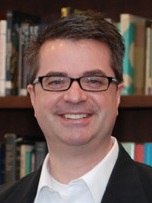Talk by Prof. Greg Welch
Abstract
Virtual humans have been around for many years, offering a controlled human dimension to applications such as training, education, and entertainment. The manifestation of virtual humans in a real space typically involves a 2D flat panel display, sometimes with stereo head tracked imagery. In these situations, the 2D display effectively serves as a portal to the virtual human’s world, through which all communication and perception must pass. From the perspective of the real space, the virtual humans are in some sense “trapped” in the 2D display. But what if instead, avatars could manifest themselves in physical form, with human shape, appearance, behavior, and sound? In other words, what if virtual humans could break free from their 2D displays, joining us in the real world as physically-present approximations of real humans? In this talk I will discuss this idea, including some applications, technology research, perceptual issues, and even ethical issues

|
- Date: Monday, 11 April 2011
- Time: 15:00
- Location: 03.13.010
|
Short CV
Greg Welch is a Research Professor of Computer Science at the University of North Carolina at Chapel Hill. In 1986 he received a degree in Electrical Technology from Purdue University (with Highest Distinction), and in 1996 a Ph.D. in Computer Science from UNC-Chapel Hill. Prior to UNC he worked on the Voyager Spacecraft Project at NASA's Jet Propulsion Laboratory, and on airborne electronic countermeasures at Northrop-Grumman's Defense Systems Division. His current research interests include virtual and augmented reality, human tracking systems, 3D telepresence, computer vision, and stochastic estimation. He has co-authored over 50 publications in these areas, and is a co-inventor on multiple patents. He has served on numerous international program committees, co-chaired workshops and seminars, and is an Associate Editor for the journal Presence: Teleoperators and Virtual Environments. He maintains an internationally-recognized web site dedicated to the Kalman filter. He is a member of the IEEE Computer Society and ACM


